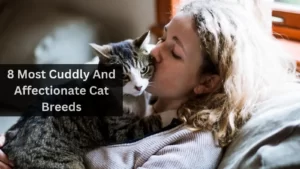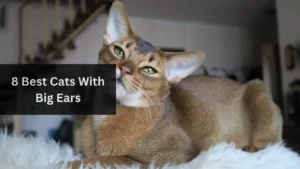Introduction:
Owning a Bloodhound is a unique and rewarding experience, filled with moments of joy, laughter, and, of course, challenges. These distinctive scent-tracking hounds are known for their droopy ears, soulful eyes, and unparalleled tracking abilities. In this guide, we’ll explore eight quirks and challenges that only a Bloodhound owner truly understands.
The Bloodhound Saga: Navigating Life with a Scent Enthusiast
Owning a Bloodhound comes with a set of delightful and, at times, perplexing situations. Let’s dive into the world of Bloodhound ownership and unravel the quirks that make them such fascinating companions.
The Nose Knows All
Bloodhounds are renowned for their exceptional sense of smell. While their olfactory abilities are impressive, Bloodhound owners quickly realize that every outdoor adventure turns into an extensive scent exploration. Expect frequent stops, detours, and the occasional full-stop, nose-to-the-ground investigation.
Drool, Drool, Everywhere
The Bloodhound’s signature droopy jowls and loose facial skin contribute to their endearing appearance, but they also come with a side effect – copious amounts of drool. Bloodhound owners become accustomed to the daily ritual of wiping drool from walls, furniture, and even the ceiling (how did it get up there?).
The Curious Case of “Selective Hearing”
Bloodhounds are known for their independent nature, which sometimes translates to “selective hearing.” Owners often find themselves repeating commands or resorting to creative methods to capture their Bloodhound’s attention. It’s not defiance; it’s just that the fascinating scents in the environment often take precedence.
The Challenges of Off-Leash Adventures
While many dogs can enjoy off-leash adventures, Bloodhound owners face a unique set of challenges. The powerful lure of scents can lead these tracking enthusiasts on unexpected journeys, requiring a patient owner and a reliable recall command.
“Furry Houdini” Escapades
Bloodhounds possess an uncanny ability to escape from seemingly secure enclosures. Their determination to follow a scent can lead to creative escape maneuvers, leaving owners in awe of their dog’s problem-solving skills and wondering how the seemingly impossible was achieved.
The Art of Grooming
Bloodhounds, with their loose facial skin and droopy ears, require regular grooming to maintain their hygiene and overall health. Cleaning wrinkles, checking ears, and managing the distinctive odor that sometimes accompanies Bloodhounds become essential tasks for dedicated owners.
The “Stealth Mode” Snacking
Bloodhounds are notorious for their stealthy snacking habits. Owners often find themselves questioning how their dog managed to access the seemingly secure treat stash or navigate the kitchen counter undetected. Bloodhounds possess a unique talent for locating and enjoying forbidden delights.
The Dignified Baying Serenade
While many dogs bark, the Bloodhound has a distinct vocalization known as baying. Owners quickly learn to appreciate the melodious, almost mournful, sound that is part of the Bloodhound’s communication repertoire. Neighbors may or may not share the same sentiment.
Conclusion:
Owning a Bloodhound is an adventure filled with laughter, patience, and a deep appreciation for the unique qualities of these remarkable dogs. While the challenges may be specific to Bloodhound ownership, the bond forged with these scent-tracking companions makes every drool-soaked moment and unexpected adventure truly special.
FAQs:
Q1: Are Bloodhounds good with children?
A1: Bloodhounds are generally good with children, known for their gentle and patient nature. However, due to their large size and sometimes exuberant behavior, supervision is recommended, especially with younger children, to prevent unintentional knocking over or rough play.
Q2: Do Bloodhounds make good indoor pets?
A2: Bloodhounds can adapt to indoor living but thrive with access to outdoor spaces for exploration and scent-tracking activities. While they may have occasional drooling and grooming needs, their calm demeanor makes them suitable for indoor living, provided they receive sufficient exercise and mental stimulation.
Q3: How much exercise do Bloodhounds need?
A3: Bloodhounds require moderate exercise to keep them healthy and happy. Regular walks, playtime, and opportunities to explore scents are essential for their well-being. Owners should be mindful of their joints, as excessive running on hard surfaces should be avoided, especially during their growth stages.
Q4: Are Bloodhounds easy to train?
A4: Bloodhounds are intelligent but can be independent and stubborn, making training a unique experience. Consistent and positive reinforcement methods work best, and early socialization is crucial. Bloodhounds excel in scent-tracking activities and may participate in tracking competitions.



